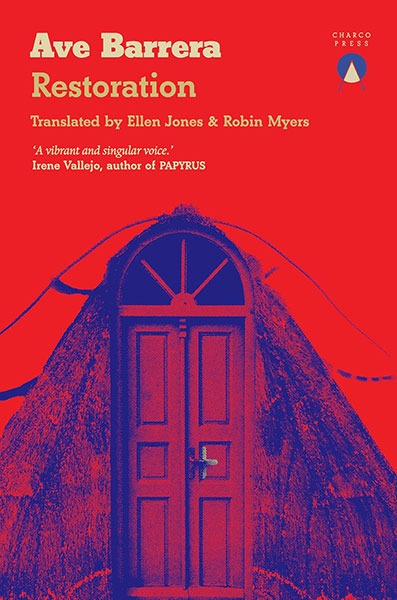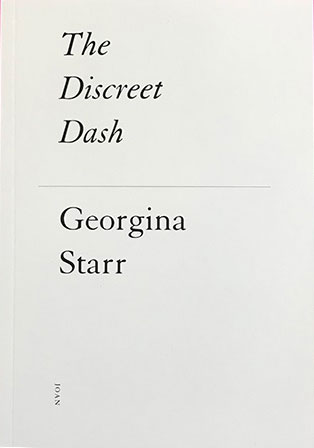
Restoration, Ave Barrera (Charco Press)
The Discreet Dash, Georgina Starr (Joan)
Time catches up with the protagonists of these two novels, revealing other people’s dark and murky pasts involving secret relationships, sexuality and abuse. Both feature houses with hidden rooms and are told by strong assertive female narrators who gradually become lost in and consumed by the past. One is matter-of-factly down to earth, the other a web of personal obsessions and occult fantasy. Both are uneasy, original reads.
Restoration is a story of an old empty house being done up by the girlfriend of the owner. They hardly seem to know each other and he is mostly absent from the book once he has instructed Jasmina to do as she will as long as she never opens the small locked room at the back. The house seems to have been abandoned in a hurry, and as she cleans and throws stuff away, deals with nosey neighbours and restores order, she conjures up stories of what might have happened. Or is she possessed by what lingers in the house, which is full of old cameras and images?
It is never stated but it seems that Jasmina is haunted, even as she constructs her own ‘nest’ within the restoration project, and that Zuri (the mostly absent boyfriend) is also haunted but complicit too. He, like his ancestors who once lived there, is a photographer and although it is unclear whether it is Jasmina and Zuri undertaking photo shoots or Jasmina reliving them in a dream state, he knows more than he is telling… The reveal here, of what is in the locked room, exposing the past, is genuinely shocking and unexpected. As Jasmina writes, ‘Memory can be recovered. Forgetting cannot.’
The reveal in The Discreet Dash is very different, as indeed is the whole book, which is more mannered and awkward. Dora obsessively records conversations and talk, and is on a mission to find a film she remembers seeing when she was young. She seems to be ‘guided’ by events and strangers to meeting the child star of the film, Susan, who is now an archaeology lecturer in London. They quickly fall into a relationship and Dora quickly moves in with Susan, although just as quickly Susan embarks on a series of brief sexual encounters with colleagues, assistants and strangers which keep her away from her home.
Susan has already told Dora about Dash Hall, where the filming took place; both have unexplained experiences there: the house forcibly expelling them onto the drive. Meanwhile, Susan’s mother insists Susan only made two films and that Dora is imagining this other film whilst also accusing Dora of being a journalist, an intruder and a fraud. Before Susan temporarily disappears Dora attends Susan’s lecture about death rituals and guardians in an archeological project, later she undertakes her own research about two mysterious moths she ends up keeping within the flat.
After reading some arcane books, Dora undertakes bizarre rituals with moth eggs which result in hallucinations and cosmic understanding. These involve taping herself, listening back and transcribing her absent or other self. Eventually, of course, Susan returns, having undertaken her own archaeological dig at Dash Hall, to find a changed Dora bursting with secret knowledge and strange matter. Together they have created a new world…
It is an uneasy read and I suspect I have missed many of what the back cover blurb calls ‘historical female mythologies’ in the text. I like the idea of collapsed time though, the way we are haunted by the past, which is sometimes hidden from us or self-suppressed. If at times Starr tries too hard with metaphors of archaeology and history, not to mention her chapter titles, her clever use of sound, film and photography is outstanding. I am not quite so taken with the mysterious moths or the rituals of psychic rebirth and mutation, but I have never been overly keen on surrealism or dream worlds. A more matter-of-fact tone would have grounded this story and made it both more believable and even stranger, but as it stands it is a delirious, unnerving and disturbing work.

.
Rupert Loydell
.
